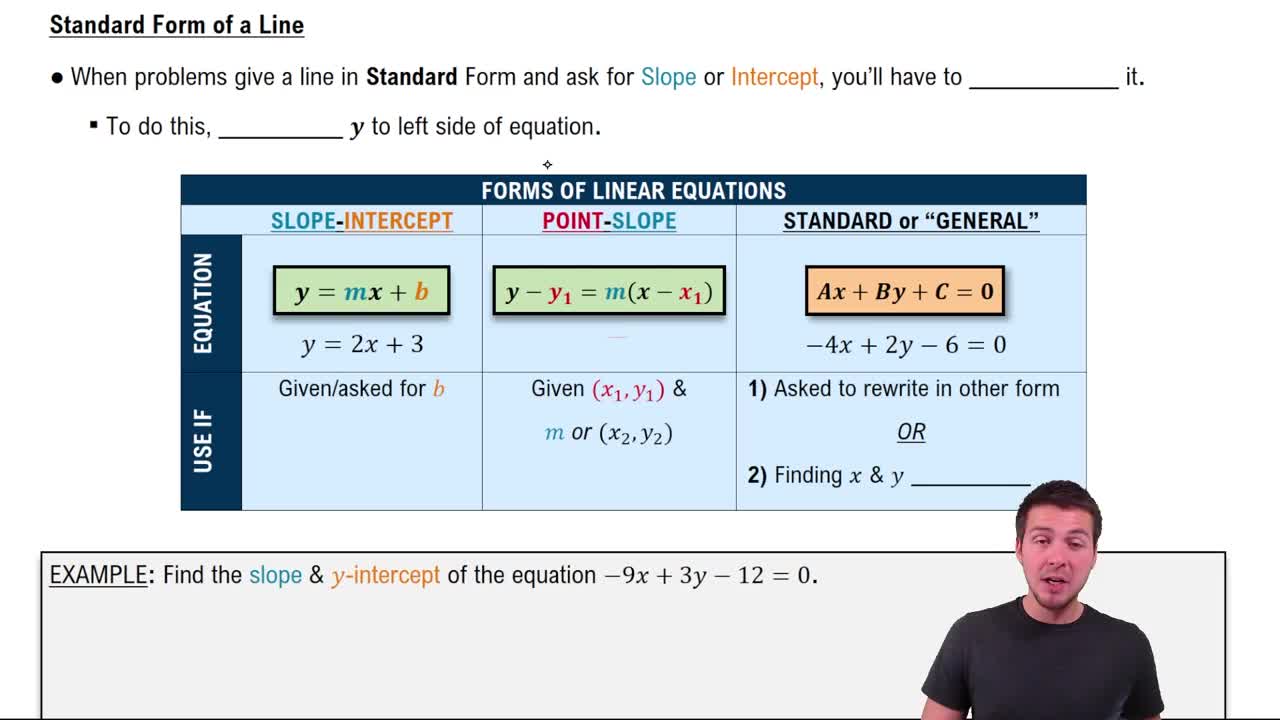Here are the essential concepts you must grasp in order to answer the question correctly.
Undefined Slope
An undefined slope occurs in a vertical line, where the change in the y-coordinates is non-zero while the change in the x-coordinates is zero. This means that the line does not rise or fall as it moves horizontally, resulting in a slope that cannot be calculated. The equation of a vertical line can be expressed in the form x = a, where 'a' is the x-coordinate of any point on the line.
Recommended video:
Standard Form of a Line
The standard form of a linear equation is typically written as Ax + By = C, where A, B, and C are integers, and A should be non-negative. This form is useful for quickly identifying the x- and y-intercepts of the line. To convert an equation into standard form, one can rearrange the terms to isolate the constants on one side of the equation.
Recommended video:
Standard Form of Line Equations
Slope-Intercept Form
The slope-intercept form of a linear equation is given by y = mx + b, where m represents the slope of the line and b is the y-intercept. This form is particularly useful for graphing because it directly provides the slope and the point where the line crosses the y-axis. To convert from standard form to slope-intercept form, one can solve for y in terms of x.
Recommended video:



